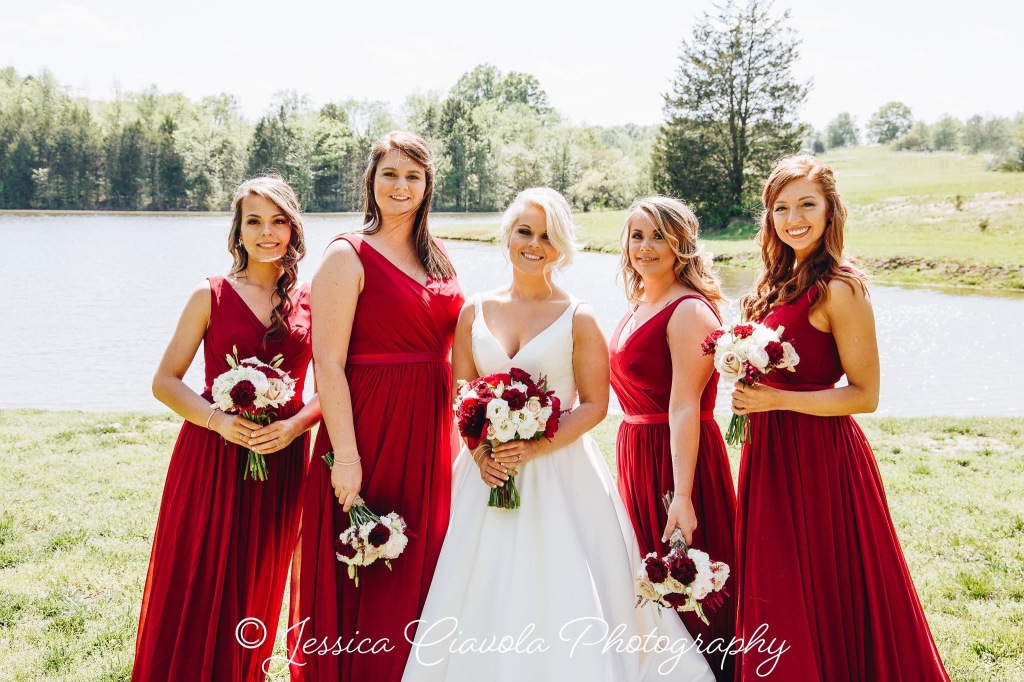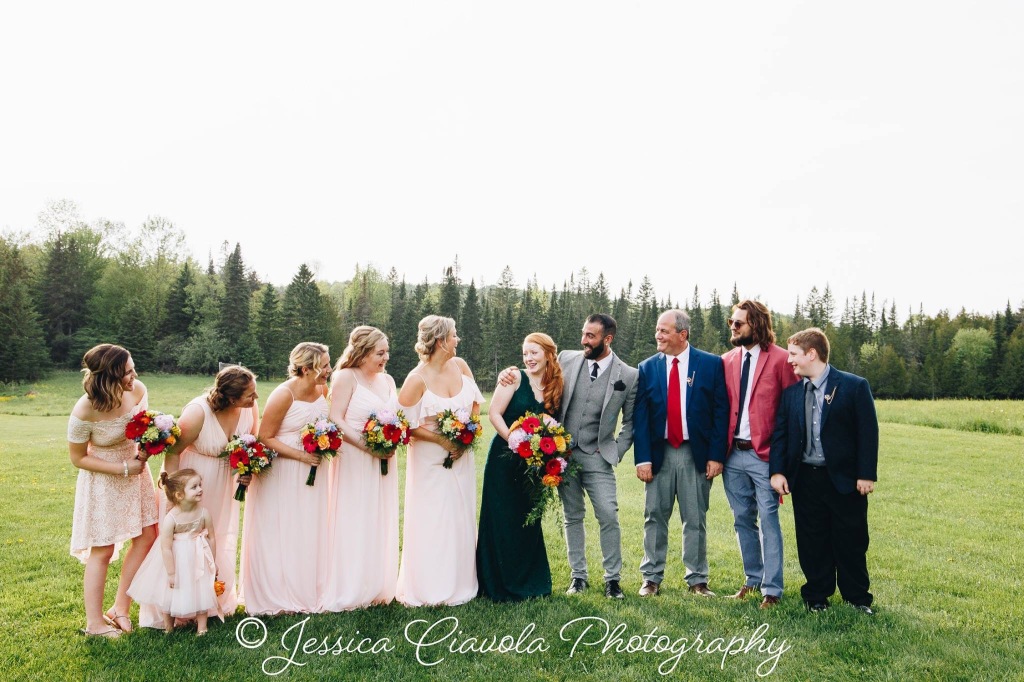This might seem obvious… or maybe not. But, this week I want to cover why considering the lighting on your wedding day is incredibly important for your photographer, and the overall gallery you will end up with. This includes the timing of your wedding day and the venue(s) you select.
Lighting is what makes a photographer. The literal definition of photography is the art of producing images recorded by the action of radiant energy, or light, on a surface. So, what does that mean?
It means that the more light, the right light, we have to work with, the better the outcome. The less light, the wrong light, the harder the situation is to control. Does that mean it’s impossible to photograph in nonideal situations? Not even a little! It just means that the photos you’re expecting versus the photos you may get will be a little (or a lot) different.
What do I mean by this? Well, you can’t expect glowy photos when the sun is directly overhead during the ceremony. And you can’t expect beautiful bright images if you choose a no-window reception hall with wooden paneling for the interior. Everything is manageable but if there is a way to be educated on how and when to plan things, your photographer is the best person to seek advice from. No, we are not wedding planners. And if you have a wedding planner we fully support, and even love, that! Planners should probably be able to give you a lot of this advice. If not, then we are 100% here to guide you to make sure that at the end of the day, your wedding photos reflect exactly what your vision is.
THE VENUES::
I fully believe that choosing the right venue for your wedding vision is the first step in the recipe for perfect lighting.
Choosing a venue just because it looks pretty doesn’t mean that it will photograph pretty. If you’re looking for naturally lit photos with an intimate, romantic feel, you may want to choose a venue that offers a lot of windows to allow that natural light to seep in, with access to brighter interiors such as white walls or hardwood flooring for the light to bounce off of. A dark, non-lit barn with natural wood may seem to radiate a rustic romantic feel, but it will not photograph brightly, resulting in a lot of artificial lighting and darker photographs.
If you are dead set on a venue that doesn’t offer ideal lighting, that doesn’t make it a bad venue and that doesn’t mean it’s not the perfect venue for you! It just means you have to be realistic on what your wedding photos may end up looking like. Example, orangey wood paneled walls will not photograph the way white walls would. White walls reflect light, while orangey/brown wood produces orange tinted hues and dark shadows.
If your venue doesn’t offer a ton of natural light, there are ways to still introduce lighting that isn’t completely made up of our off-camera flashes. If you’re having an indoor barn wedding that doesn’t have natural reflectors such as white walls or large windows for the light to come in from, then adding candles or twinkle lights around the venue, even uplighting, can help create a more natural look in your photographs. If your event is being hosted outdoors, then consider using string lighting! That can add for a variety of effects in your images, which I personally LOVE!
THE TIMING::
This is probably the most vital piece to the entire wedding day. Properly timing your wedding is crucial for everything that happens with your photographer.
Planning a ceremony between 12-3pm during the summer is not ideal, but it’s not unmanageable. Why is this the least ideal time for photographers? Because during that window of the day the light is very harsh and will blow out a lot of backdrops or overexpose parts of the skin that can make it more difficult to edit. Lots of people will be squinting. If it’s 90* out with no breeze and no shade, your guests will be sweating and begging to get to the reception (more than likely not focusing on your beautiful ceremony!!).
Below are two examples of the difference timing can make! One was captured earlier in the day during the 12-3pm window with no real diffused light to work with because of how open the sky was and how bright the sun was at that time of day, and one was captured later around the 5:30pm window where the sun was dipping and was able to be used more effectively. Can you tell which one is which? (PS– yes, these were taken while I was still Jessica Ciavola Photography!!!)


There are a lot of reasons to not plan a midday wedding, any time of the year. If that’s your choice because you don’t want to be partying into the wee hours of the night, that is totally fine and I 100% support that!! However, just be prepared for harsher photos if the lighting is dead overhead. Ask your photographer what time they think would be the best time to have the ceremony based on the details of your wedding day.
Details to consider– are you having a first look? Are you planning to do portrait hour and the bride and groom photos before or after the ceremony? Do you want sunset photos? Do you want naturally lit photos VS. artificially lit photos? What time of year is your wedding? When does the sun set? These are all questions I ask my couples to keep in mind while assisting with the planning of my weddings!!
Pro-tip: taking photos in and around your venue to show your photographer is always super helpful, especially if we are helping you build a timeline, in the event we have never been to the venue before or cannot make a visit with you to see it in person.
In summary– at the end of the day your wedding will be exactly what you want it to be and lighting or not, we couldn’t be any happier for you!! No matter the conditions, your photographer should want to help you celebrate every moment. I want to help educate couples on why lighting is important because it’s what makes up our jobs. We know what lighting is good and what lighting is not-so-good, and it’s our job as photographers to try to help you with knowing what works and what doesn’t.
xo – Jess
View comments
+ Leave a comment